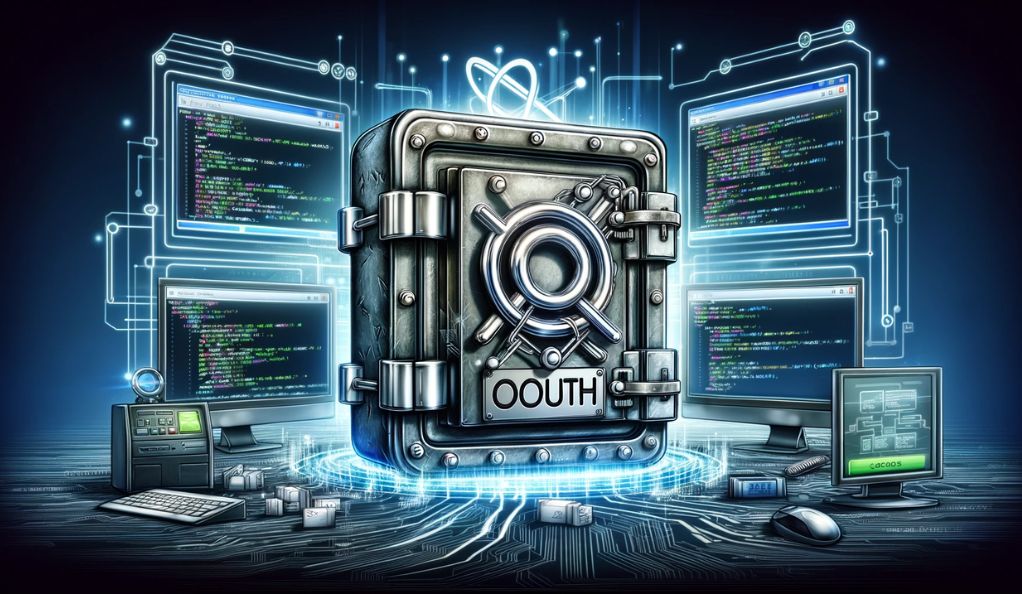In an era where digital transformation shapes every aspect of our lives, software security emerges as a paramount concern for developers worldwide. The complexity and sophistication of cyber threats continue to evolve, making it crucial for software professionals to adopt robust security measures in their development processes. This article aims to shed light on key strategies and best practices in software security, specifically targeting developers who are at the forefront of creating secure and reliable applications.
The Imperative of Security in Software Development
Security in software development is no longer an optional add-on but a fundamental necessity. As developers, the responsibility to safeguard user data and ensure the integrity of applications is immense. This responsibility extends beyond the mere functionality of the software to encompass its resilience against potential breaches and exploits. The ramifications of neglecting software security are dire, ranging from data breaches to substantial financial and reputational losses.
The Scope of This Article
This article is meticulously crafted to guide developers through the labyrinth of software security. We begin by exploring Secure Coding Practices, delving into the principles and guidelines that fortify code against vulnerabilities. Next, we discuss the significance of Code Signing Certificates, a pivotal element in establishing trust and authenticity in software. Finally, we address Implementing OAuth for Secure API Authentication, a critical aspect in safeguarding API access and interactions.
Objectives and Learning Outcomes
Our primary objective is to equip developers with a comprehensive understanding of:
- Best practices in secure coding and how to integrate them into the software development lifecycle.
- The intricacies of code signing certificates and their role in enhancing software trust.
- Implementing OAuth effectively for robust API security.
Understanding Secure Coding Practices
Secure coding is a fundamental aspect of software development that focuses on the creation of systems resilient to attacks and vulnerabilities. This approach not only prevents common software exploits but also plays a crucial role in maintaining data integrity and user trust. In the context of escalating cyber threats, understanding and implementing secure coding practices is not just beneficial; it’s essential for any developer committed to building robust and secure software.
Definition and Significance of Secure Coding
At its core, secure coding is the practice of writing software in a way that guards against the accidental introduction of security vulnerabilities. It involves an awareness of how attackers exploit code and a proactive approach to coding that seeks to eliminate these vulnerabilities before they become a threat. The Open Web Application Security Project (OWASP) highlights that secure coding is not restricted to any specific programming language or technology; rather, it is a universal set of practices applicable across all platforms.
Key Principles for Secure Coding
A primary principle in secure coding is to keep processes as simple and transparent as possible. The adage “Keep It Simple, Stupid” (KISS) is particularly pertinent in this context. Complex code can be difficult to analyze and more prone to errors, whereas simpler code is easier to review and secure. This principle is echoed by Snyk, which advocates for sticking to proven security and coding best practices rather than reinventing the wheel.
Implementing Secure Coding Practices in Development

Integrating secure coding practices into the software development lifecycle is a strategic approach to mitigating the risk of security vulnerabilities. It is not just an activity to be performed at a certain stage of development but a mindset that needs to be maintained throughout the entire process. This integration not only ensures the security of the software but also significantly reduces the cost and effort required to address security issues post-deployment.
Integrating Secure Coding in the Development Lifecycle
The integration of secure coding practices begins with the education and training of developers. Teams should be familiar with common security vulnerabilities and how they can be avoided. The OWASP Secure Coding Practices Quick Reference Guide provides a comprehensive checklist that can be integrated into every stage of the development process, from design to deployment. Regular code reviews and security audits are essential to ensure that secure coding practices are being followed correctly.
Checklist for Secure Coding
A practical approach to secure coding involves adhering to a checklist that addresses key security concerns. The OWASP Foundation outlines several critical points, such as:
- Input Validation: Ensure all input is validated on a trusted system, such as the server side. This includes identifying all data sources and classifying them into trusted and untrusted categories.
- Data Source Classification: Classify and validate all data from untrusted sources, including databases and file streams.
- Centralized Input Validation Routine: Use a centralized routine for input validation across the entire application to maintain consistency and effectiveness.
The Role of Code Signing Certificates

Code signing certificates play a vital role in establishing the security and trustworthiness of software. They are used by developers to digitally sign applications, executables, and software programs. This digital signature ensures end-users that the code they are receiving has not been altered or compromised since it was signed. In a digital world where the authenticity of software is constantly challenged, code signing stands as a crucial line of defense.
Overview of Code Signing
Code signing involves the use of an X.509 certificate to digitally sign software. This process provides a digital signature that is attached to the software or the executable file. When users download or run the signed software, their operating system or web browser can verify this signature to confirm that the software has not been tampered with. As detailed by SignMyCode, a publicly trusted code signing certificate, issued by renowned certificate authorities, is crucial for this process.
Importance of Code Signing for Software Trust
The primary goal of code signing is to instill trust in software. When software is signed with a code signing certificate, it assures users that the software is genuine and has not been modified by a third party. This is especially important for software distributed over the internet where the risk of tampering is higher. Code signing certificates also include the developer’s signature and, often, a timestamp, providing further assurance about the integrity of the software.
In essence, code signing certificates are not just a security measure; they are a trust mechanism for the digital world, assuring users about the legitimacy and safety of the software they use. Moving forward, the next section will delve into the best practices for using code signing certificates effectively.
Best Practices for Using Code Signing Certificates
Using code signing certificates correctly is essential for maintaining the trust and security they are designed to provide. The effectiveness of code signing is largely dependent on how these certificates and their associated private keys are managed. Mishandling or compromising these keys can lead to significant security breaches, undermining the trust in the signed software.
Ensuring the Security of Private Signing Keys
The private signing key associated with a code signing certificate is its most crucial component. As highlighted by Entrust, protecting this key is paramount. If a private key is compromised, the trust in the certificate, and by extension, the software signed with it, is irrevocably damaged. Best practices suggest minimizing access to these keys and using secure storage solutions to prevent unauthorized access.
Consequences of Compromised Code Signing Processes
The impact of a compromised code signing process can be far-reaching. As discussed by Encryption Consulting, improper code signing practices can introduce significant risks, including the potential for malicious actors to distribute malware under the guise of legitimate software. This not only affects the users but also severely damages the reputation of the software developer or company.
Key Takeaways
To ensure the integrity of code signing:
- Limit access to the private keys to only those who absolutely need it.
- Use secure storage and management practices for private keys.
- Regularly audit and monitor the use of code signing certificates.
Adhering to these best practices will help in maintaining the trustworthiness and security of the software. Next, we will explore the implementation of OAuth for secure API authentication, a critical aspect of modern software security.
Implementing OAuth for Secure API Authentication

OAuth has become a standard protocol for secure API authentication, providing a robust framework for controlling access to resources. This method allows users to securely delegate access to their resources without sharing their actual credentials, a crucial aspect in today’s interconnected digital ecosystem.
The Essence of OAuth in API Security
OAuth, specifically OAuth 2.0, acts as an authorization framework that is widely adopted for securing access to web APIs and other resources. As explained by Azure API Management, OAuth 2.0 restricts the actions a client application can perform on behalf of the user, without ever sharing the user’s actual credentials. This level of control is vital in preventing unauthorized access and ensuring secure interactions between different software components.
Benefits of Using OAuth 2.0
The implementation of OAuth 2.0 offers several advantages:
- Delegated Access: OAuth allows users to grant limited access to their resources to third-party applications without exposing their primary credentials.
- Flexibility and Scalability: OAuth 2.0 is adaptable to various types of applications, whether web-based, desktop, or mobile, making it a versatile choice for different environments.
- Enhanced Security: By abstracting user credentials from third-party applications, OAuth significantly reduces the risk of credential exposure and potential security breaches.
Integrating OAuth with API Security Best Practices
To maximize the effectiveness of OAuth in securing APIs, it’s essential to integrate it with established API security best practices. This integration ensures that only authenticated users can access enterprise APIs and that their interactions are managed securely.
Implementing Industry-Standard Authentication Protocols
OAuth 2.0, along with other industry-standard authentication protocols such as API keys, JWT, and OpenID Connect, forms the backbone of secure API access. These protocols ensure that only authenticated and authorized users can interact with APIs. As noted by IBM Blog[24], using these protocols is key to maintaining the security and integrity of API interactions.
Role-Based Access Controls
An additional layer of security can be achieved through the implementation of role-based access controls (RBAC). This involves defining roles and permissions for different types of users and ensuring that they can only access resources relevant to their role. RBAC helps in minimizing the risk of unauthorized access and potential data breaches.
Best Practices in API Authentication
When implementing OAuth 2.0 and other authentication mechanisms, it’s crucial to follow best practices:
- Regularly Update Security Protocols: Keeping up with the latest security updates and patches is vital for protecting APIs against new vulnerabilities.
- Monitor and Audit API Usage: Regularly monitoring API usage helps in identifying and responding to unauthorized or suspicious activities.
- Secure API Endpoints: Ensure that all API endpoints are secured with proper authentication and encryption protocols.
Conclusion: The Imperative of Ongoing Vigilance
In the rapidly evolving landscape of software development, security remains a constant concern demanding attention and adaptation. This article has covered key aspects of software security, including secure coding practices, code signing certificates, and OAuth for API security. Secure coding is foundational, emphasizing simplicity and a security mindset. Code signing instills trust, assuring users of software integrity. OAuth enhances API security, offering delegated access control.
Integration into the development lifecycle, ongoing vigilance, and adaptation to evolving threats are paramount. In security is an ongoing journey that developers must embrace to shape a trustworthy digital future. The realm of software development is ever-changing, but one truth endures: security is paramount. Developers shoulder the responsibility of safeguarding code, not only for today but for the digital world’s collective future.




